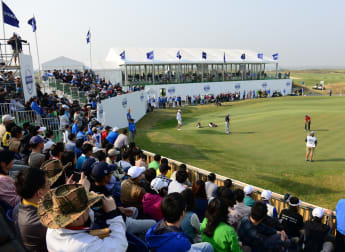Augusta National, which this week hosts the season’s first Major Championship, the Masters Tournament, is one of the most iconic courses in the world. Here, some of the European Tour players hoping to contend for the famous Green Jacket, guide you through all 18 holes.
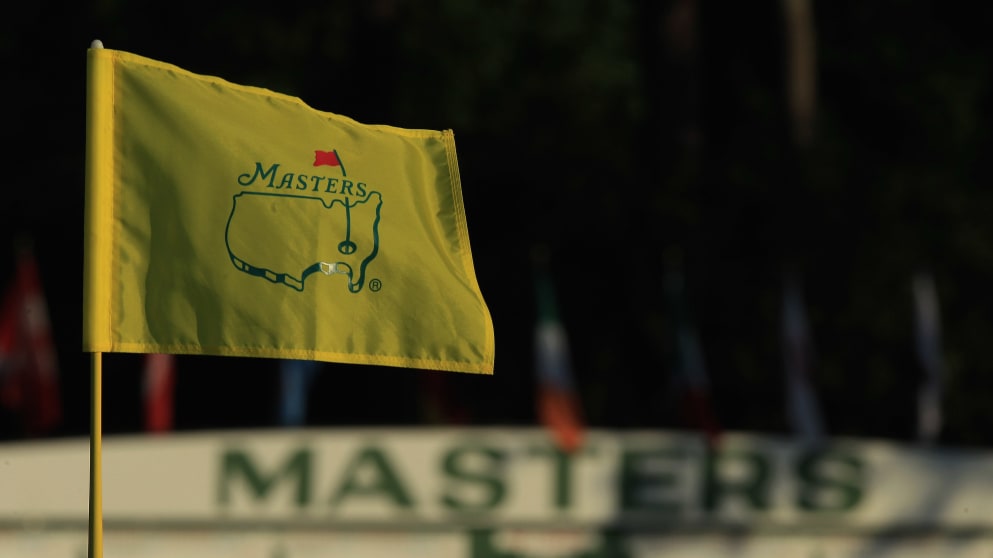
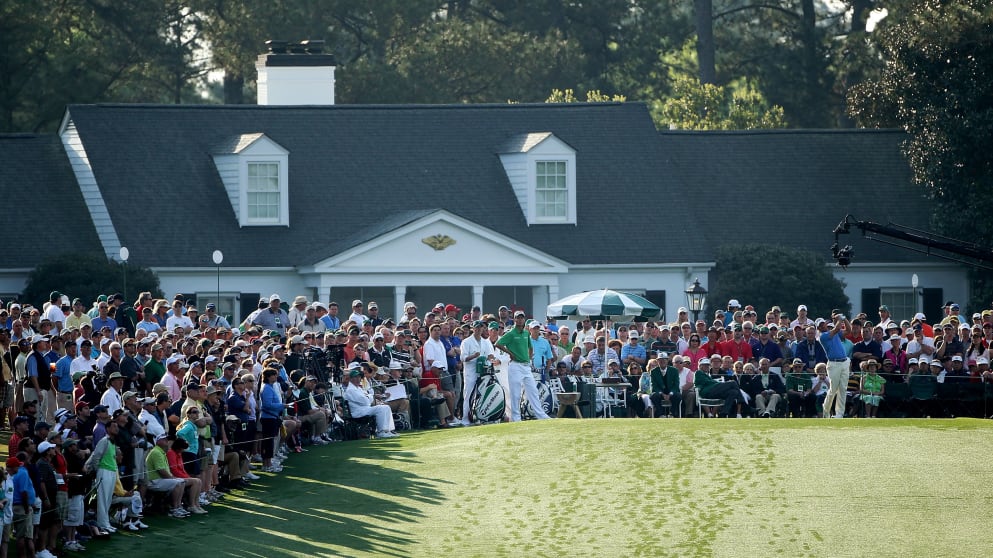
Hole 1, Tea Olive, 445 yards, par 4
Graeme McDowell (Northern Ireland)
The first hole at Augusta is one of the sneakiest, toughest holes on the golf course. It is a really tough opener. You have an uphill tee shot that you have to keep left of that trap that cuts in at about 285 yards or 290 yards. It leaves you a five or a six iron, maybe a seven if you hit a good one, into one of the toughest green complexes at Augusta. That front left pin is very difficult to get to. You’ve really got to place your iron shot into the middle of that green and four is always a good score on this hole.
|
Hole 2, Pink Dogwood, 575 yards, par 5 Louis Oosthuizen (South Africa) I will always try to take the tee shot on with driver on this hole and shape it right to left off that trap. If you get a good one it can run down a bit and you can go in with an iron and then just try and hit it in the hole! Seriously though, that right trap is never a bad spot, but if you have an iron in there you try to hit it into that little neck and run it up to the hole. If it is a really tough pin, and it is breezy and you don’t feel comfortable with it, short right is a pretty good spot. You can really get your round going here though, as I did with the albatross in 2012. If you catch that slope and it goes even to within 10ft you have a good chance of eagle. I was just very fortunate that it went in a couple of years ago. |
 |
Hole 3, Flowering Peach, 350 yards, par 4
Luke Donald (England)
A short par four, so a lot of players will either hit a three iron off the tee, short of the bunkers on the left, or take driver over them, depending on the pin position. It’s a very sloping green, from right to left. A back right pin position will mean a lot of players will attack the tee shot with a driver. Most of the other pin positions they will try to get it in the fairway and have a wedge or a nine iron in. The tough part is getting the distance right for the second shot. It is considered one of the holes where you have a birdie opportunity. It’s one of those great short par fours where you can make birdie, but you can also get into trouble.
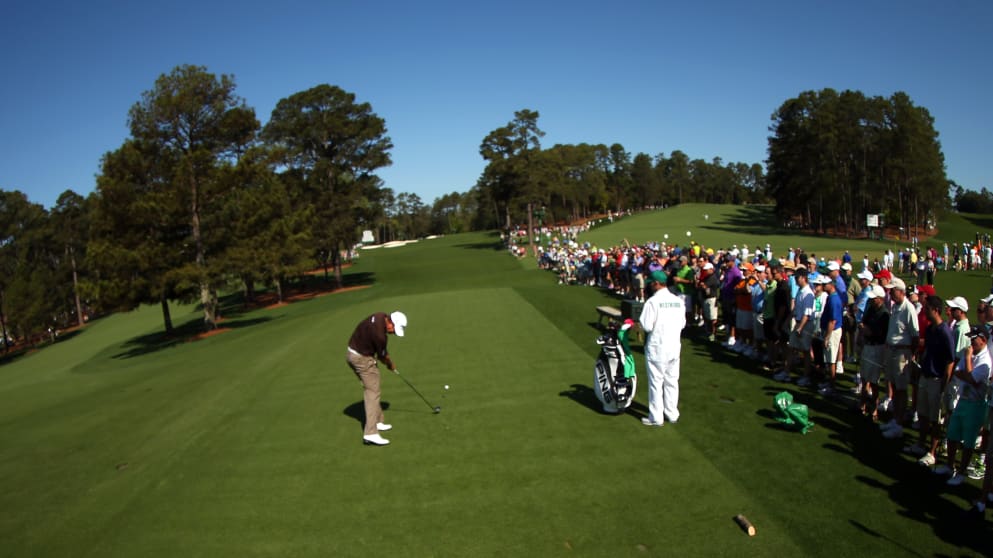
Hole 4, Flowering Crab Apple, 240 yards, par 3
Gonzalo Fernandez-Castaño (Spain)
The fourth is a very long par three, especially when you play off the back tees. The green is well guarded by a very large front bunker, but that is not the worst place to be, unless the pin is short right. It is a green you are hitting anything from a three iron up to a five wood into. Anything on the green is a good shot and, like any hole at Augusta, you want to be below the flag. That might be a bit too much to ask when you are hitting from this distance. I’d be happy with four threes on this hole, that’s for certain.
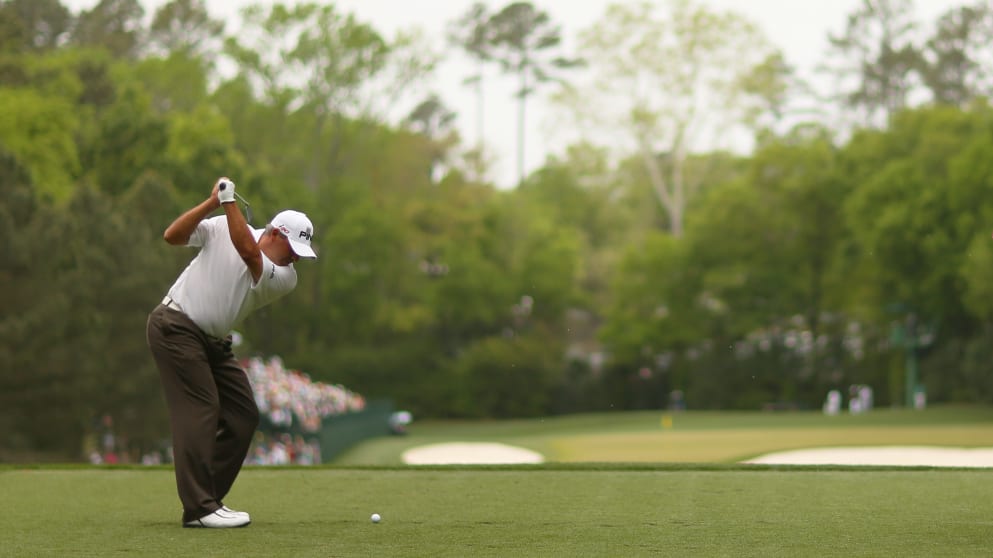
Hole 5, Magnolia, 455 yards, par 4
Miguel Angel Jiménez (Spain)
A long par four, dog-leg from right to left. You need to concentrate on hitting a draw from the tee to finish the ball on the middle of the fairway, which slopes from right to left. Depending on the wind you might have anything from a five iron to a seven iron into the green. It’s a slopey green from back to front, and you need to be very precise with your approach. It’s a very nice hole, but also one of the toughest.
Hole 6, Juniper, 180 yards, par 3
Jamie Donaldson (Wales)
This par three has a two-tier green. If the pin is on the bottom tier, which is the majority of the green, it is a relevantly easy position. If it is high on the right, it is a narrower target which makes it tougher and it is hard to even hold it on that tier. Overall you can attack a left pin. It is a good hole just to make a three and walk away from. My favourite Masters memory came on this hole last year, when I made a hole-in-one with the pin on the high right. It was a special moment.
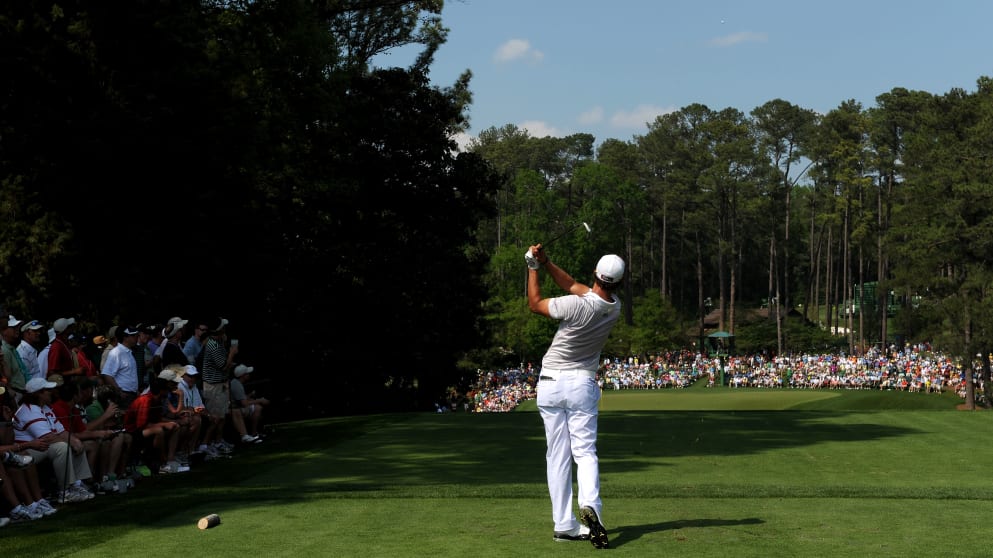
Hole 7, Pampas, 450 yards, par 4
Francesco Molinari (Italy)
This is a tough par four, with one of the tightest tee shots on the course. Augusta is generally quite generous off the tee, but this is a tight tee shot. It is a driver or three wood for most of the guys. The first thing is to hit the fairway, then it’s a shallow green - wide, but very shallow. So you need to be spot on with your distance control on the second shot. You don’t want to go long because is slopes from back to front. It’s a birdie chance if you hit the fairway, but you can easily get into trouble as well.
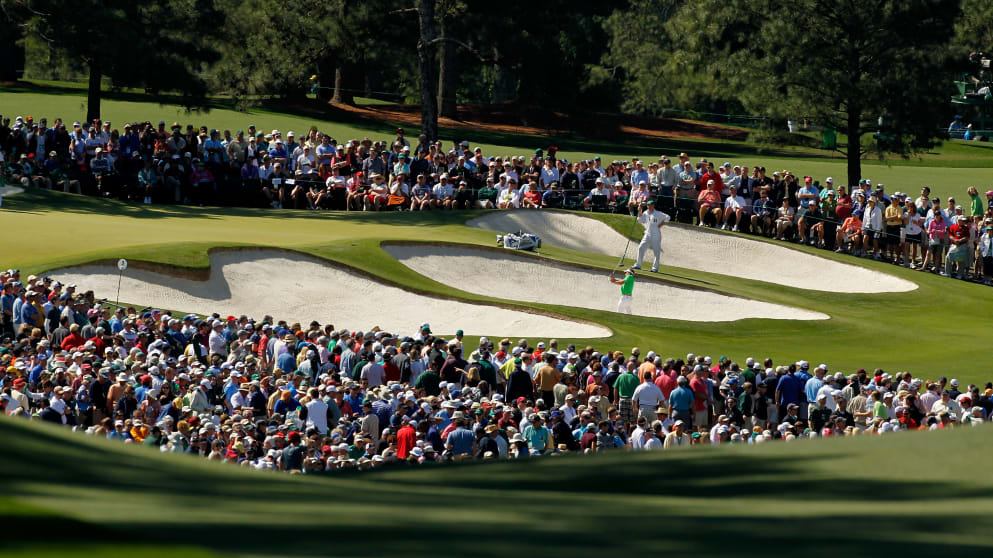
Hole 8, Yellow Jasmine, 570 yards, par 5
Martin Kaymer (Germany)
This hole is uphill and the most important thing is that you place the tee shot somewhere on the left-hand side of the fairway. If you hit the fairway bunker on the right hand side it is quite difficult to lay-up because of the trees that hang down in the middle of the fairway. You have a chance to go for the green, depending on the pin position, but you want to miss it short right ideally, unless the pin is in the back right. I think the best chance of making birdie is if you lay-up. It’s not a given birdie here, even though it is a par five, but it is definitely one of the holes you could score on.
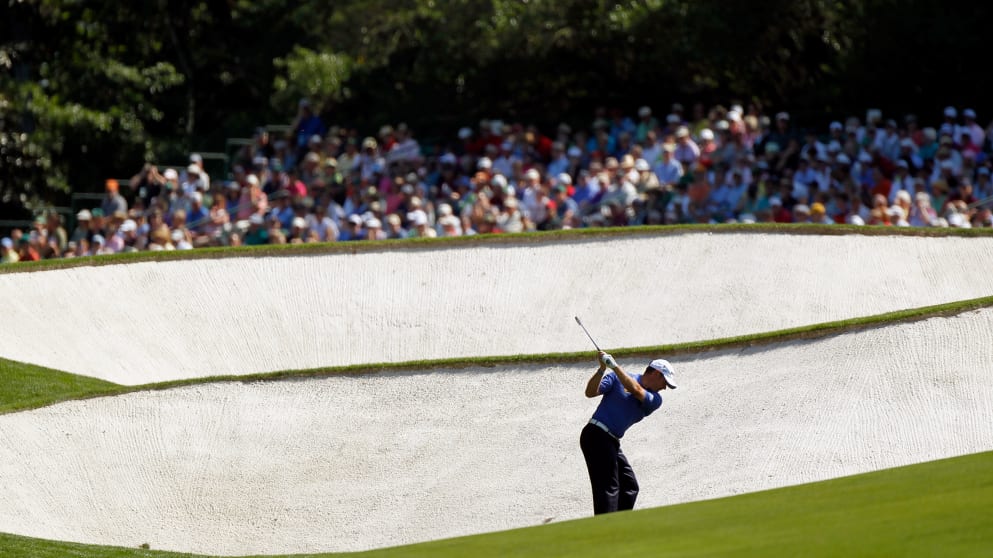
Hole 9, Carolina Cherry, 460 yards, par 4
Matteo Manassero (Italy)
It is a really tricky tee shot because the fairway slopes from left to right. It’s really difficult to take the right lie on the left. You have to hit driver because you want to be down there. If you just nick it right, it will fade into the pine trees and then it becomes really difficult. You have to hit a nice low fade to get into the middle of the fairway, then it is a lofted club. Usually the green is pretty firm and you need some loft on the second shot. You never want to leave it short. Something that pitches and stops would be great. Then green is really fast, especially if you are past the hole, and you can be left with some difficult putts. It’s a tricky hole.
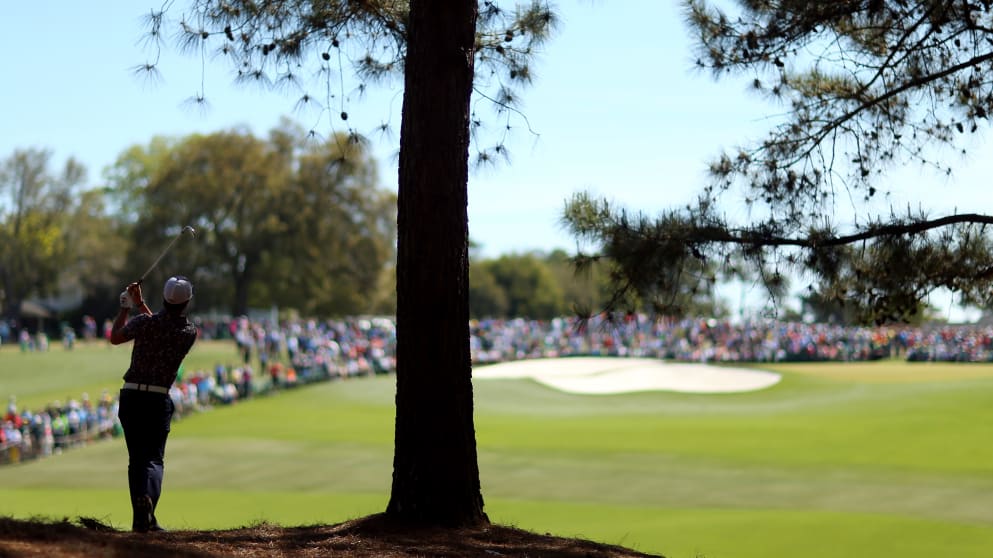
Hole 10, Camellia, 495 yards, par 4
Sergio Garcia (Spain)
The tenth hole at Augusta is a long downhill par four, dog-leg left. Usually we don’t hit driver most of the time, unless it is into the wind. You can usually catch the downslope with a three wood and get a bit of roll. You have to turn it a good 15 yards with a three wood and catch the slope, to give you something like a five or a six iron, to maybe an eight iron, depending on how much roll you get. Then it is a tough second shot into an elevated green. If you hit it just short it can come back quite a lot. There’s not much room on the left and a tough bunker on the right, because the green slopes from back to front, and from right to left. Anything from the right of the hole, when then pin is on the left, is very fast, and if the pin is on the right and you miss it right, you pretty much have no shot. It is the kind of hole where if you make four-fours you are very happy. If you can make a birdie it is great.
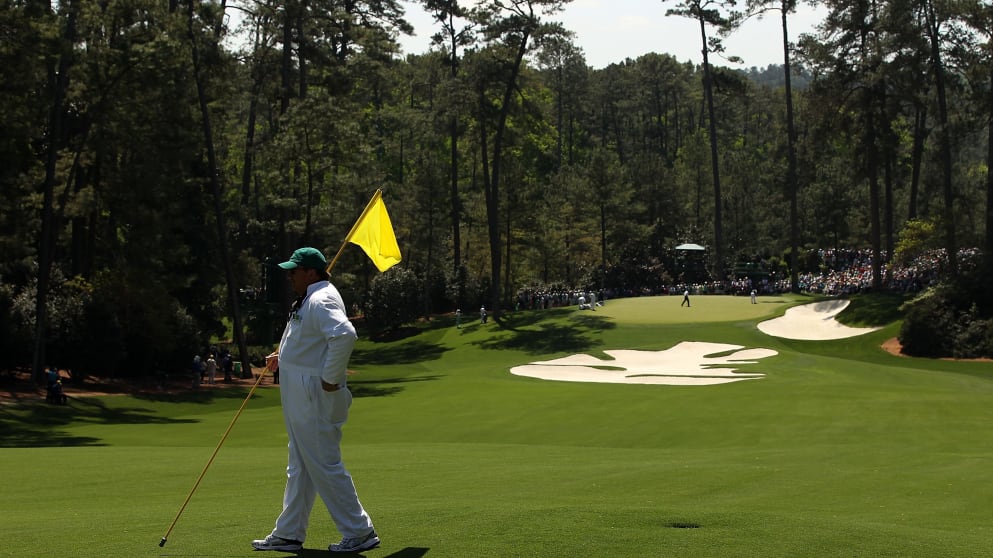
Hole 11, White Dogwood, 505 yards, par 4
Henrik Stenson (Sweden)
It’s one of the tougher holes out there, I would say. It’s a pretty straight tee shot. Not too many tee shots are narrow at Augusta, but I guess this is one of the more narrow ones. If you hit a good drive you are faced with a pretty intimidating second shot. You are standing a little bit high up and hitting anything from a seven or eight iron to a rescue club into a green, with water left. It is one of the tougher holes on the course and I’ll imaging the scoring average will be quite high during the week. You need two really good golf shots and the green is not without danger either, as it has a bit of gradient on it. If you are above the hole it could be a tricky two putt.
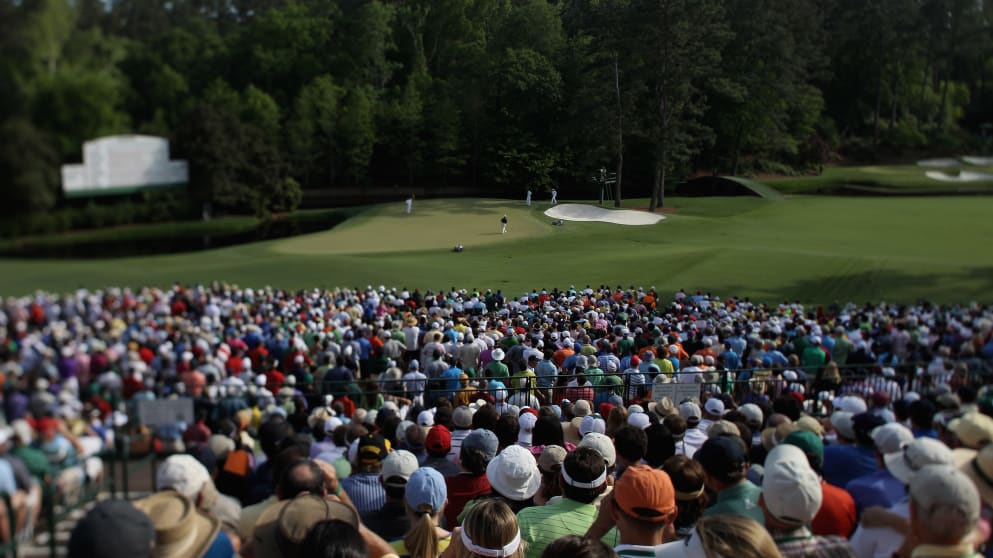
Hole 12, Golden Bell, 155 yards, par 3
Lee Westwood (England)
This is probably the most famous par three in the world. The difficult part about it is the wind swirling around down there and the fact that the front edge of the green on the left runs diagonally away from you. You’ve got to pick the right club and get the right direction. If the flag is on the front edge on left and you hit it a bit right, the trap is level with the pin and it is a tough up and down from there. Conversely, if it is on the right at the back and you hit it left, then you go in the back trap. It’s a tough par three and I don’t think anyone complains if they get through here with a three, which is amazing to say for a hole which is only 155 yards long.
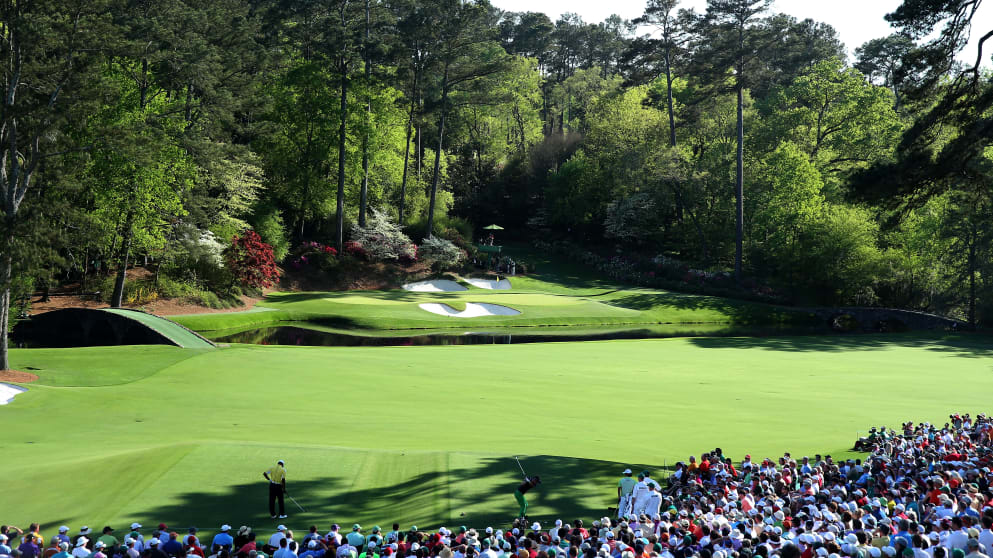
Hole 13, Azalea, 510 yards, par 5
Justin Rose (England)
I’ve been a bit more aggressive on this hole over the last few years. Before I used to hit a lot of three woods off the tee to try to draw it, giving me a three iron or a long iron in, but I kept hitting it in the creek with my second shot. I have started to realise that is the worst possible play. I’d rather miss the tee shot now and lay up and still give myself chance to make birdie, whereas hitting it in the creek with your second shot means you are going to make six more often than not. So I’ve decided to be more aggressive from the tee and take driver and really get the ball further around the corner. Then if I miss you can still try to make four another way. It’s a hole you’ve got to hit two great shots on. Left off the tee is the worst miss, but most of us guys know that, so you get a lot of guys that end up in the pine straw on the right hand side. If you miss left with your second shot it is a tough up and down from any of those bunkers. It’s also a tough green as well, to be honest. The right edge of the green – a lot of people over-read that putt. If the pin is on the top left it is a tough wedge shot to keep the ball up there. Every pin placement has its challenge and every shot does on this hole. That’s what makes it such a great hole. You have to do everything right to walk off here with a four.
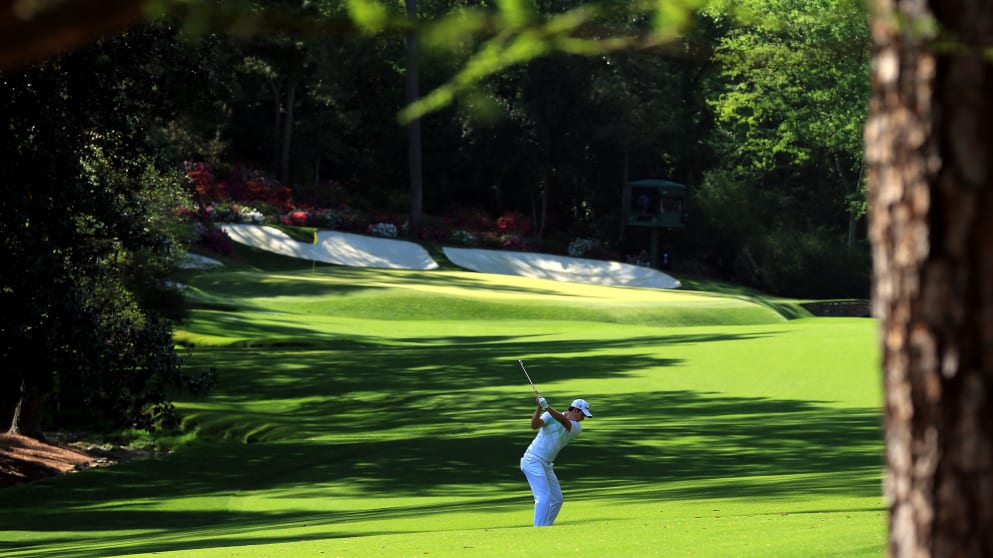
Hole 14, Chinese Fir, 440 yards, par 4
Thongchai Jaidee (Thailand)
The 14thhole is quite tough, especially with the green. You have to have a good drive and be in a good position to approach the pin. The green is very difficult as it slopes from the left side to the front. You have to have a good iron in and hope you have an uphill put. Any shot on the right side is better.
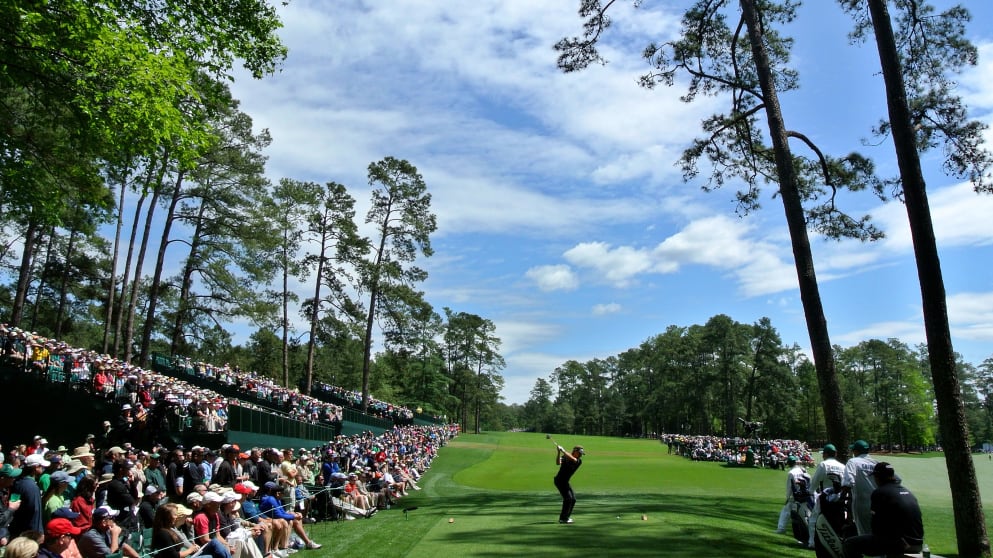
Hole 15, Firethorn, 530 yards, par 5
Rory McIlroy (Northern Ireland)
This is a pretty straight away tee shot. Depending on which way the wind is, you can get it over those two little humps in the fairway. Then you have anything from a five wood to a five iron in your hand for the second shot. I think everyone knows you can’t be short. You have to play for the middle of the green or at least land it there. If you go over the back of the green the up and down isn’t too easy either. All the par fives at Augusta are great holes and offer great risk reward. This is the last of them and it is a hole you want to take advantage of and make a four because you have a tough finish awaiting you.
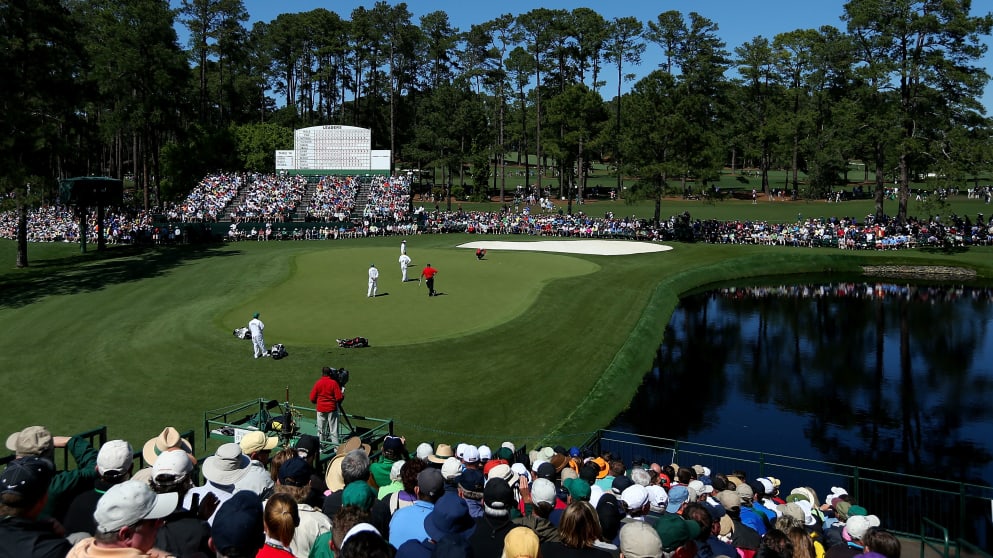
Hole 16, Redbud, 170 yards, par 3
Branden Grace (South Africa)
This is a great little par three. It’s one of those holes where distance is everything. You really have to be spot on with which club you are going to hit, especially with the wind swirling around. The green is on two tiers, so if the pin is anywhere on the front, you have to hit it somewhere below the hole, or slightly past it and hope it comes back down the slope. When the pin is at the back you don’t really play with it, you just make sure you are below the hole, take a three and run.
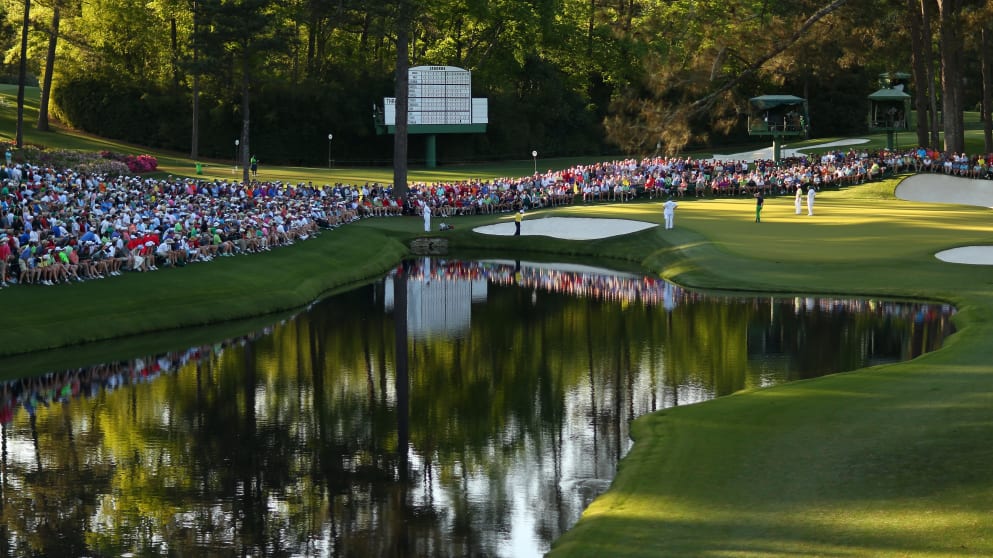
Hole 17, Nandina, 440 yards, par 4
José María Olazábal (Spain)
Obviously the Eisenhower tree guarding the 17thhole is not there this year after being damaged, and what they do in its place will have an effect on the tee shot. If there is no tree there, you really need a solid drive to get over the hill and have a clear view of the green. It’s quite tight, with trees right and left. It’s a very demanding tee shot. If you hit the fairway, the pin position has a big say in what you do with the second shot. If it is in the middle, you might have a short iron. The toughest pin position, I would say, is back right. That is the trickiest of them all. The wind usually blows from right to left, and it depends on how firm the greens are, but a four is a good result on the 17th. You’d take that every day.
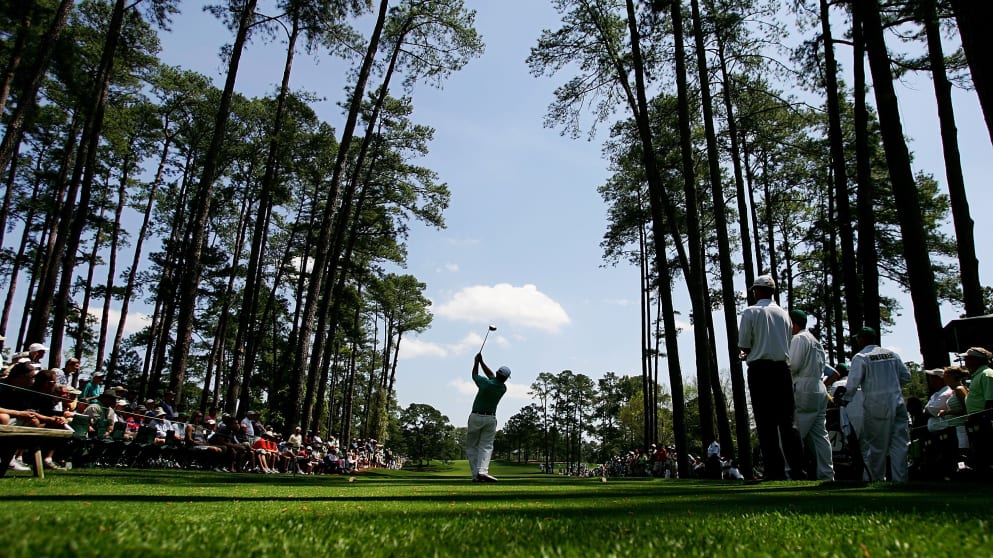
Hole 18, Holly,465 yards, par 4
Charl Schwartzel (South Africa)
The final hole at Augusta requires a very accurate tee shot with those pine trees giving it a tunnel feel. What makes it so difficult is that they are about 100 yards off the tee, then you have bunkers at about 300 yards sitting on the left side of the fairway. You’ve got to aim at those and move it off with a little fade, which is ideal. That will leave you with a seven or eight iron into a green that is elevated from the fairway about ten to 12 yards. It is a two-tiered green so it requires a precise second shot. Hopefully if you are on the right level you give yourself an easy shot, but if you are on the wrong level you can run into a bit of trouble.

